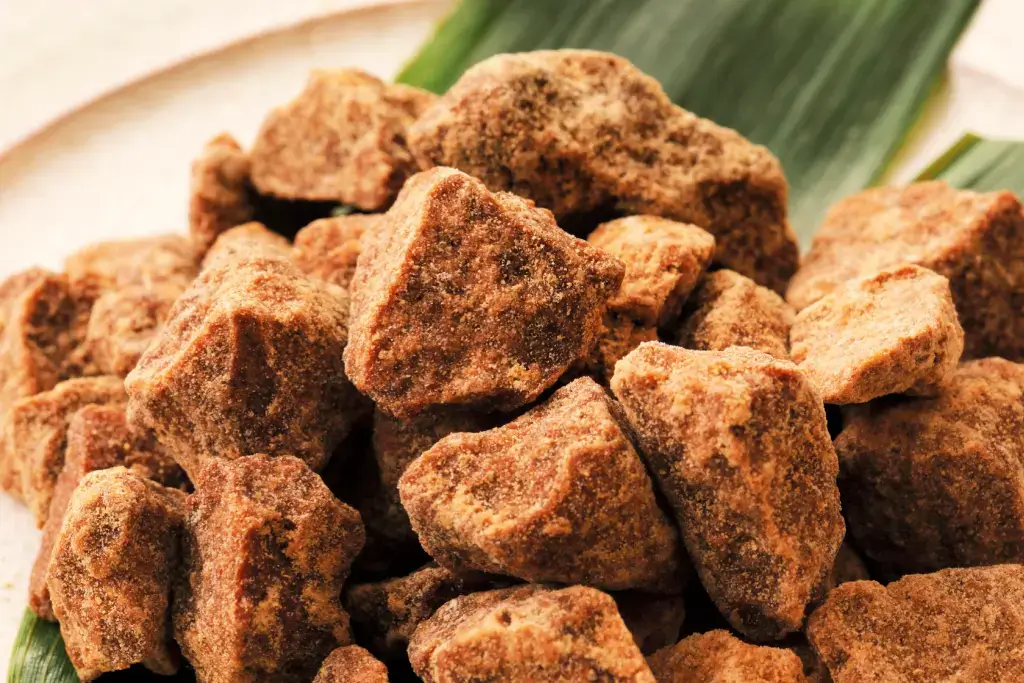Kokuto (Okinawa’s healthy brown sugar) is one of Okinawa’s best gifts to the world. Produced in Japan’s southernmost tropical islands, it plays a vital role in the local economy, agriculture, and diet. Increasingly, kokuto has become popular around the world and can be found in a variety of treats. With the rich and complex taste of Okinawa brown sugar, you can bring out the best in your snack.
Table of Contents
ToggleWhat is kokuto?
Kokuto is a unique and highly regarded natural health food from Okinawa, Japan. It is made by extracting juice from locally grown sugarcane and boiling it for a long time until it becomes solid sugar. This process helps keep the nutrients from the sugarcane intact, making the sugar not only tasty but also good for you. It contains essential minerals like calcium, iron, potassium, and plenty of antioxidants. It has a unique flavor that is pleasantly sweet and smooth. People love its delicious taste and the fact that it’s a healthy choice.
What does kokuto taste like?
The brown sugar from Okinawa is a common ingredient in various delicacies throughout Japan, making it a common ingredient with a unique taste. When combined with desserts, it creates a truly exceptional tasting experience. Unlike regular brown sugar, kokuto offers a distinct flavor profile that elevates the taste of many Japanese sweets. It imparts a rich minerally smokiness, earthy undertones, and a sophisticated sweetness with a subtle hint of bitterness.
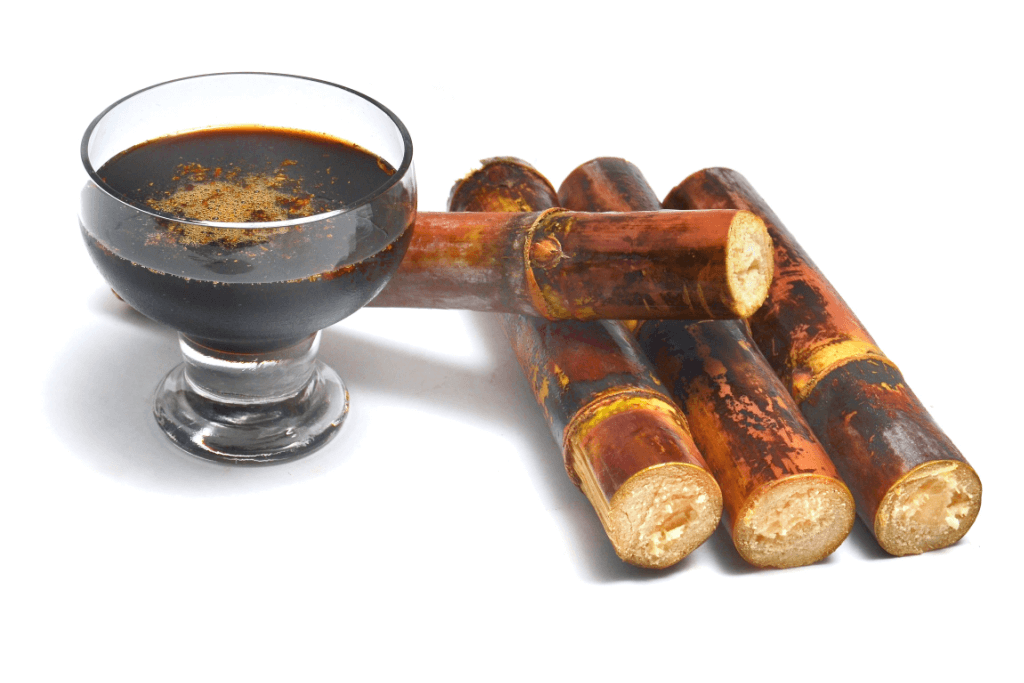
Additionally, kokuto’s aroma is deep and carries subtle notes reminiscent of tobacco. Besides its use in desserts, this exceptional sugar can also enhance the flavors of savory dishes. Its malt-like, salty, and caramel notes make it enjoyable even when consumed independently. Kokuto is versatile, adding depth and complexity to various culinary creations.
What are the best Okinawa brown sugar snacks?
Kokuto Manju
Manju (tiny round Japanese steamed cake) is a soft traditional Japanese snack with sweet fillings. Among its notable flavors is the kokuto manju, which combines raw Okinawa brown sugar and sweet azuki (red bean) paste. Also, you can easily buy this sweet treat from convenience stores and supermarkets in Japan. Not to mention, this delightful snack is pillowy soft, and subtly sweet, which pairs very well with Japanese green tea.
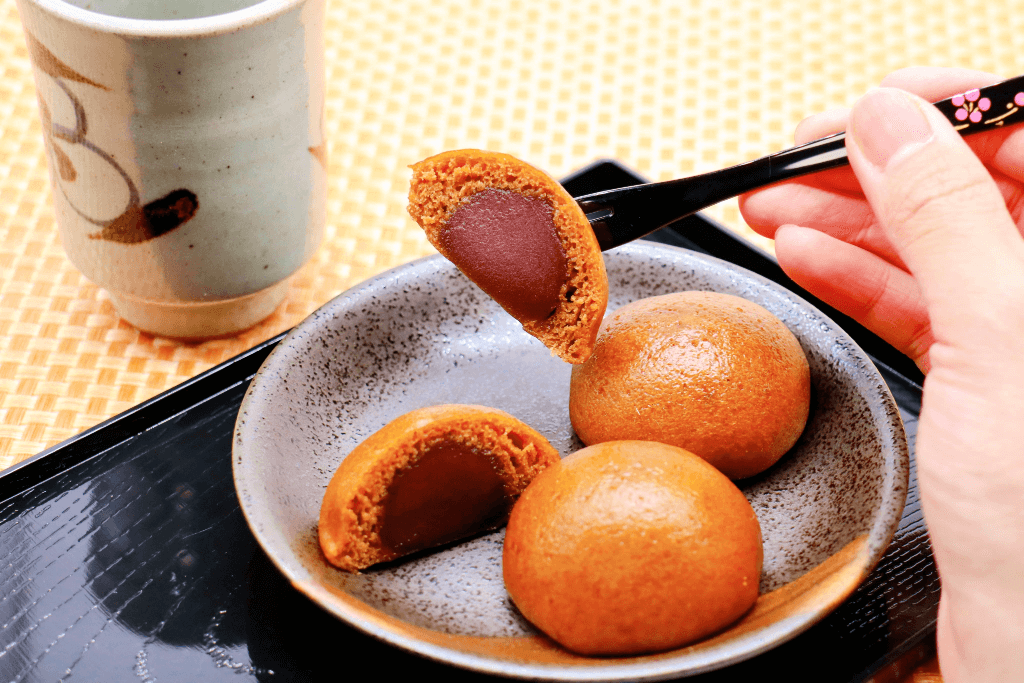
Kokuto Peanuts
Jimami (island peanuts) are a local specialty crop throughout Okinawa from summer to the end of October. The name means ground nuts which describe how they grow. These kokuto jimami are a local specialty. To emphasize, it’s made with crunchy peanuts coated in a layer of sweet brown sugar to create a nutty treat loved by locals.
Looking to discover Japan’s rich culture via its regional culinary traditions? Check out Sakuraco! Sakuraco delivers traditional Japanese snacks, teas, and sweets from local Japanese makers directly to your door so you can enjoy the latest treats directly from Japan!
Kokuto Jelly
Not surprisingly, jelly desserts are always popular in Japan, and kokuto jelly is no different. It is a soft, velvety brown sugar jelly with a complex sweetness profile. The toasty sweet, chewy black sugar pairs well with the refreshing jelly. Its chilled temperature makes kokuto jelly a fresh and delightful summer dessert.
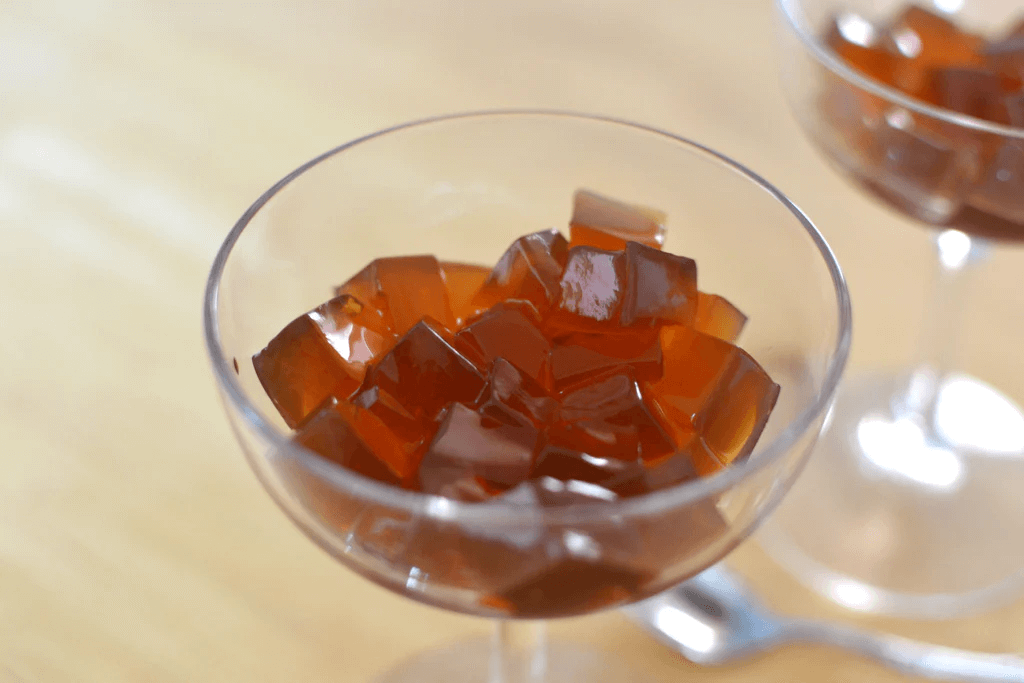
Kokuto Anmitsu
Generally, anmitsu is a summer delight that combines different ingredients, including fruits, translucent agar jelly cubes, mochi, and matcha ice cream. It also comes with kuromitsu (black sugar syrup). Kuromitsu is made of kokuto and is a critical ingredient in traditional Japanese confections. It adds a sweet, natural, rich flavor to the anmitsu.
Nantu Mochi
Okinawa produces some of Japan’s unique sweets, including nantu mochi. Surprisingly, this Japanese wagashi (traditional Japanese confections) uses miso as one of its ingredients. It also uses kokuto as its sweetener, star ingredient, and peanut paste. Additionally, it comes with jimami and sesame seeds for the perfect finishing touch!
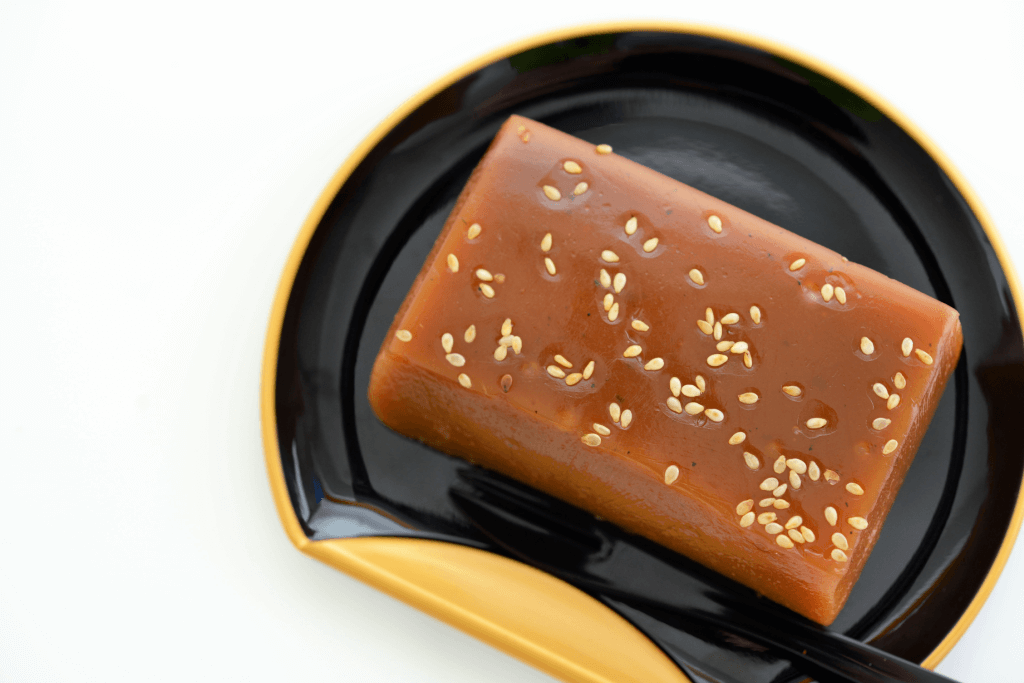
All in all, Okinawa brown sugar is prized in Japanese cooking for its intense flavor. Kokuto has a gorgeous taste that no sugar can match. It’s darker, saltier, and healthier than white sugar. It is also made from 100% local sugarcane pressed to squeeze out its sweet, raw juice. This undeniably delicious sugar is beloved for the rich, and caramel taste it adds to Japanese delicacies. Have you tried kokuto flavored snacks before? Do you have a favorite one? Let us know in the comments below!

